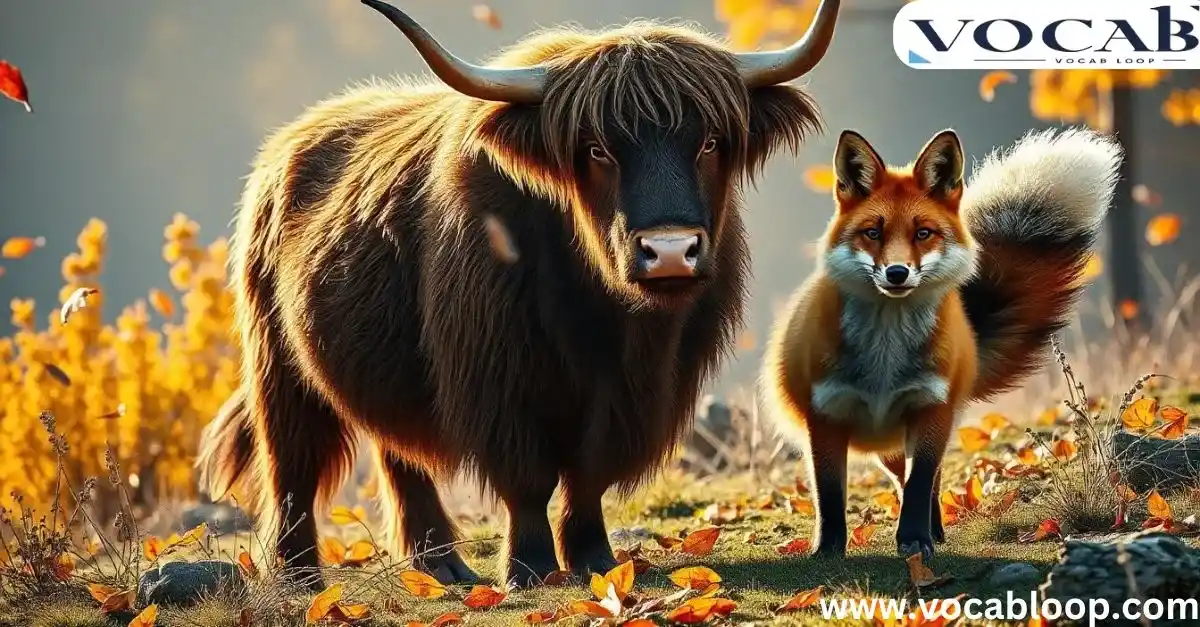The English language is a fascinating tapestry of rules, exceptions, and historical quirks. Two words that showcase this complexity are “ox” and “fox.” On the surface, they seem quite similar—both referring to animals in the animal world, yet their plural forms are remarkably different.
Instead of “oxes,” we say “oxen,” while for “fox,” we follow the typical rule and use “foxes.” This difference leads to an interesting exploration of how these plural nouns evolved and why English grammar works the way it does. Let’s dive into the plural forms of oxen and foxes, uncovering their linguistic history, regional variations, and more.
What Is an Ox?
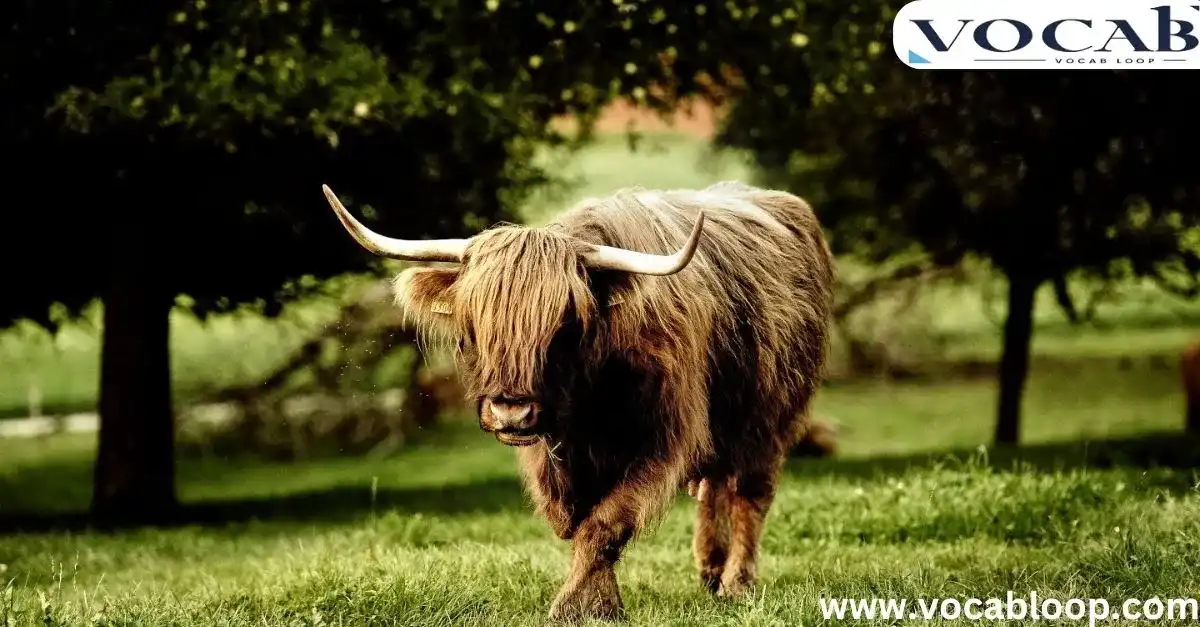
An ox is a domesticated, large, muscular animal used primarily for labor in fields such as farming and transportation. Oxen are typically castrated male cattle trained for work like plowing and pulling heavy loads. In many cultures, oxen have been a symbol of strength, patience, and endurance. They belong to the bovine family, which also includes cows, bulls, and other cattle.
- Scientific name: Bos taurus
- Family: Bovidae
- Common uses: Plowing, transportation, hauling heavy loads
- Cultural significance: Symbol of power in various traditions
In English, ox is a singular noun, and while its plural form “oxen” may seem irregular today, it was once a common way of pluralizing many plural animals.
What Is a Fox?
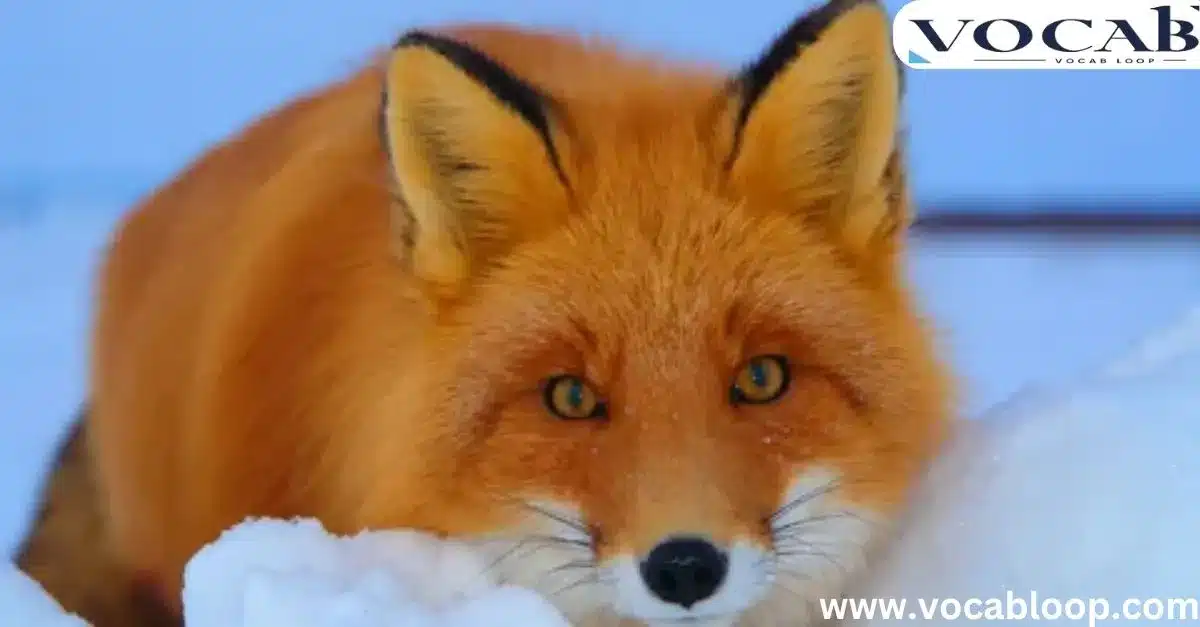
Foxes, on the other hand, belong to the canine family and are well-known for their adaptability and cunning nature. Found across various parts of the world, foxes are typically smaller than wolves or domestic dogs and are famous for their thick bushy tails, sharp features, and reddish fur. Unlike the ox, the fox remains a wild animal in most contexts, though some are occasionally domesticated as pets.
- Scientific name: Vulpes vulpes (Red Fox)
- Family: Canidae
- Habitat: Diverse environments—forests, grasslands, urban areas
- Cultural significance: Frequently depicted in folklore as cunning and clever
Fox is also a singular noun, and unlike “ox,” its plural form follows the standard rule of adding “es,” becoming foxes.
Singular Forms: Ox and Fox
In English, singular nouns like “ox” and “fox” follow typical rules when they stand alone. They refer to one animal in the animal world, but when it comes to pluralization, their paths diverge significantly. Let’s take a closer look at how these two singular forms lead to such different plural words.
- Ox (singular) refers to one bovine animal used for heavy labor.
- Fox (singular) refers to one wild canine, known for its agility and intelligence.
Both nouns originate from Old English, yet their journey to modern-day English plural forms differs.
Setting the Stage: Contrasting the Singular Forms
Despite their similarities as animals, the way we pluralize “ox” and “fox” highlights a curious shift in English over time. At first glance, both words seem like they should follow the same rules. However, “ox” belongs to an older class of words that maintain irregular plural forms, while “fox” aligns with the more common way English handles pluralization today.
Table: Singular vs Plural Forms
| Singular | Plural |
| Ox | Oxen |
| Fox | Foxes |
As you can see, while both “ox” and “fox” begin similarly in their singular state, their plural forms take different directions. This brings us to the main question: why “oxen” for “ox” and “foxes” for “fox”?
Plural Forms: Oxen and Foxes
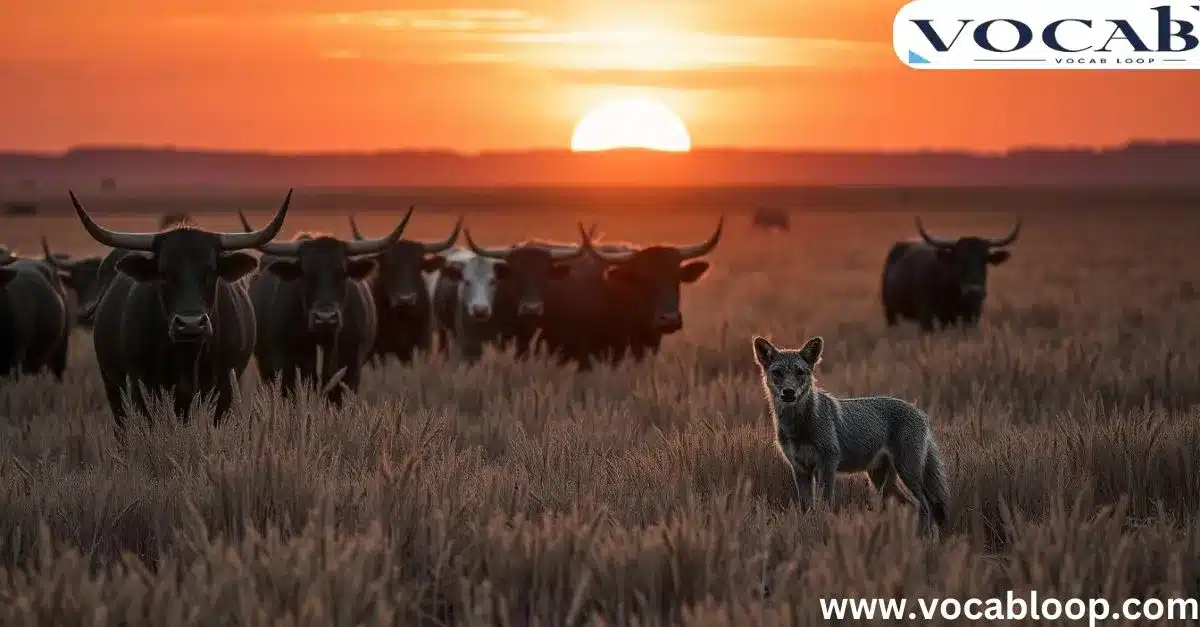
Oxen:
The plural form of “ox” is oxen, which is considered an irregular plural. This type of pluralization stems from Old English, where many words formed their plurals with an -en ending. In fact, “oxen” is one of the few surviving examples of this older pattern.
Other words that used to follow this rule, like “children” and “brethren,” have also retained their irregular plural forms, though most English words have since adopted the simpler -s or -es pluralization.
Historical Perspective:
- Old English root: oxa (singular), oxan (plural)
- Used since: At least the 9th century in Germanic languages
Foxes:
Unlike “oxen,” the plural of “fox” is formed by adding -es, resulting in foxes. This is a typical pluralization rule for English nouns that end in s, x, z, ch, or sh. By adding -es, we create a plural that is easy to pronounce and clearly distinguished from the singular form.
Historical Perspective:
- Old English root: fox (singular), foxas (plural)
- Used since: Early Middle English adopted the -es ending for easier pronunciation.
Comparing Plurals: Oxen vs. Foxes
The difference between oxen and foxes shows a split in the evolution of English. While plural nouns like foxes follow the more modern, streamlined rules of English, plural animals like oxen keep an older linguistic tradition alive.
Table: Regular vs. Irregular Plurals
| Type of Noun | Singular | Plural | Pattern |
| Regular Noun | Fox | Foxes | Adds -es for plural |
| Irregular Noun | Ox | Oxen | Older -en plural pattern |
Pronunciation of Ox and Fox (and Their Plurals)
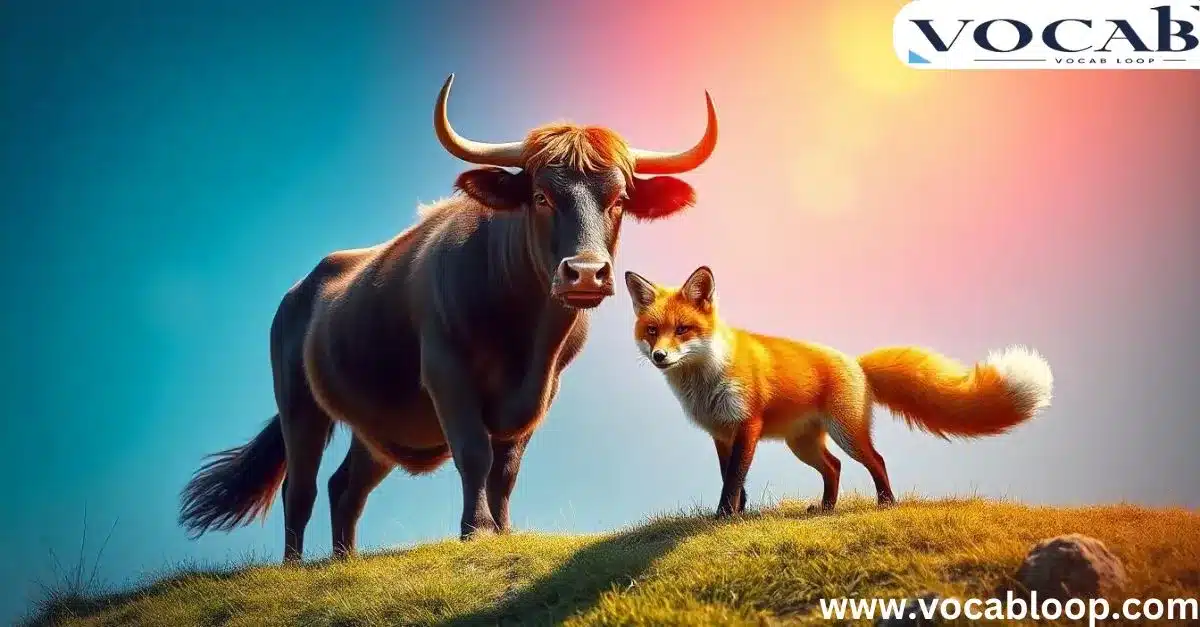
The pronunciation of “ox” and “fox” changes slightly when we move from the singular to the plural form. Here’s a breakdown:
- Ox: Pronounced /ɒks/ in the singular, and /ˈɒksən/ in the plural.
- Fox: Pronounced /fɒks/ in the singular, and /ˈfɒksɪz/ in the plural.
The change in pronunciation mainly lies in the ending sound. Foxes adds an extra syllable, whereas oxen changes the vowel sound slightly and adds a nasal “-en” ending.
Why ‘Foxes’ for ‘Fox’ and ‘Oxen’ for ‘Ox’?
The reason we say “foxes” for the plural of “fox” and “oxen” for the plural of “ox” comes down to linguistic history. Oxen belongs to an older class of words that followed a different set of rules for forming plurals. In contrast, foxes follows the regular pattern that developed later in English.
Key Points:
- Oxen follows the old Germanic pattern, using -en as the plural marker.
- Foxes follows modern English rules by adding -es to words ending in x.
This historical shift from irregular to regular pluralization patterns reflects broader changes in the language as it evolved from Old English to Modern English.
British vs. American English Usage
While both British and American English use the words ox and fox in their singular and plural forms, there are some minor differences in pronunciation. However, the plural forms—oxen and foxes—remain consistent across both dialects.
Fun Fact:
In both British and American English, oxen is sometimes used to refer to teams of cattle working together, while foxes is used more generally for groups of wild canines in the wildlife.
Origins of Ox and Fox: Etymology and Historical Evolution
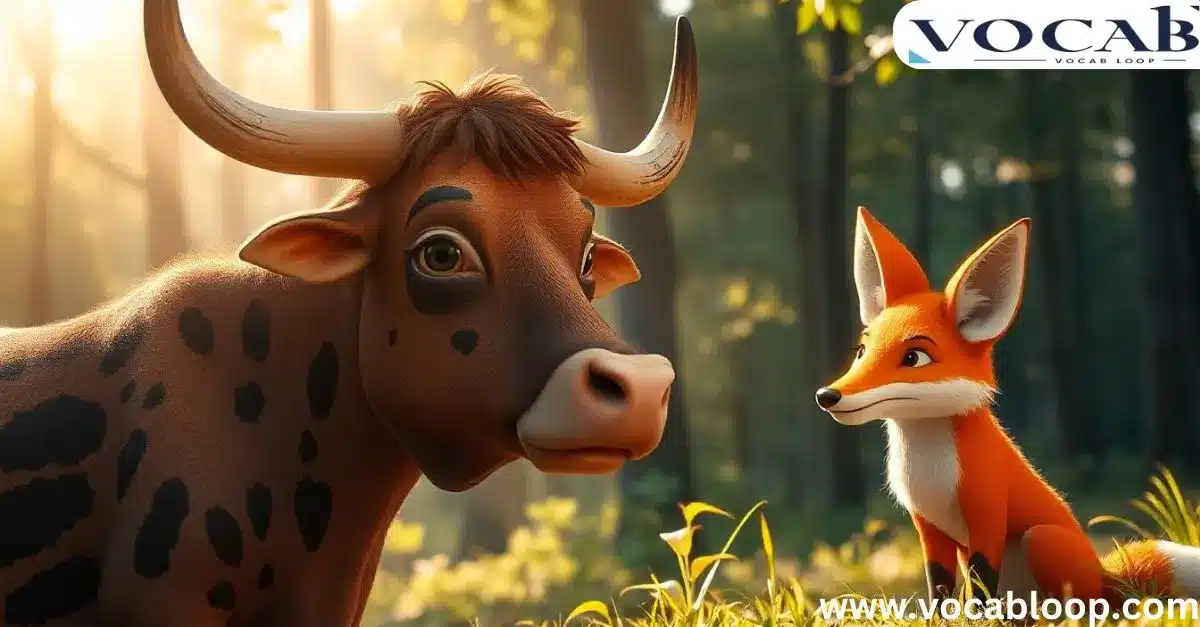
The word ox traces back to Proto-Germanic uhsaz and Old English oxa, meaning “a member of the bovine family.” The plural form oxen likely reflects the same pluralization method used for similar plural animals in Old English.
The word fox comes from Old English fox, with its roots in Proto-Germanic fuhsaz, meaning “a wild member of the canine family.” Its plural, foxes, became more standardized as English evolved.
Synonyms of Ox and Fox
Using synonyms can enhance your writing by avoiding repetition. Here are some common synonyms for ox and fox:
- Ox: Bovine, Cattle, Beef animal
- Fox: Vulpine, Canine, Wild dog
These synonyms also help us understand the broader category to which these animals belong in the fauna.
Usage in sentences
“Ox”:
- The farmer used his oxen to plow the fields.
- An ox is stronger than a horse for heavy labor.
- In ancient cultures, the ox symbolized endurance.
- The pair of oxen worked tirelessly under the hot sun.
- During the festival, a beautifully decorated ox led the parade.
- Oxen were once a vital part of agriculture worldwide.
- That man works like an ox—nothing can tire him out!
- A single ox can pull a plow through rocky soil.
- In mythology, the ox is often depicted as a creature of immense power.
- The farmer’s livelihood depended on his trusty oxen.
“Fox”:
- A fox darted across the road under the moonlight.
- The hunter spotted several foxes in the dense forest.
- She’s as sly as a fox when it comes to negotiating deals.
- A fox with a bushy tail ran past the hikers.
- The children’s book featured a cunning fox outsmarting a bear.
- Urban areas are increasingly seeing foxes roaming at night.
- The fox’s sharp eyes gleamed in the dim light.
- As a compliment, he called her “foxy” for her wit and charm.
- Foxes are often seen as tricksters in folklore and fairy tales.
- The nature documentary captured a red fox hunting for prey in the snow.
FAQs
Why do we say “oxen” instead of “oxes”?
The word “oxen” comes from Old English, where many nouns formed their plural with the suffix “-en.” This is a remnant of an older linguistic tradition.
Why is the plural of “fox” not “foxen”?
“Fox” follows modern English pluralization rules, where most nouns ending in s, x, ch, sh, or z take “-es” as the plural ending.
Are “oxen” still commonly used in modern language?
Yes, but mostly in specific contexts like farming, history, or literature. The term is less common in everyday speech.
Can “foxes” refer to more than the animal?
Yes, “foxes” can also refer metaphorically to clever or sly individuals.
Are there other irregular plurals like “oxen”?
Yes, examples include “children,” “brethren,” and “men.”
Conclusion
The plurals of ox and fox—oxen and foxes—are prime examples of the quirks in English plural nouns. While “fox” follows the regular pluralization pattern, “ox” retains its older form. Understanding why these words behave differently gives us a glimpse into the history of English and helps us appreciate the depth and diversity of the language.
In the animal world, oxen and foxes may seem unrelated, but their linguistic journeys reveal the rich complexity of English plural forms. Whether you’re studying the wildlife or working with cattle, knowing these plural words can enrich your understanding of both language and nature.

Alex Hormozi is a seasoned blogger at Vocab Loop, known for his deep insights into language, vocabulary, and grammar. With years of experience in writing, Alex shares practical tips and effective strategies to help readers improve their linguistic skills and enhance their writing abilities.

